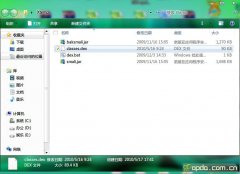Android入门第二篇之LinearLayout、AbsoluteLayout
Android 的UI 布局都以Layout 作为容器,在上面按照规定排列控件,这方面跟JAVA 的Swing 和LWUIT 很像。控件跟Layout 有很多属性是一样的,可以在Properties 里面修改,跟.NET/Delphi 等RAD 类似,其中最常用的属性有以下这些:
id="@+id/edtInput",ID 是连接UI 与代码的桥梁
Gravity= "center" ,Layout 中的控件居中

layout_width="fill_parent" ,自动填充至屏幕宽度,layout_height 同理

layout_width="wrap_content" ,自动填充为控件大小,layout_height 同理
![]()
LinearLayout ,在入门第一篇所用的Layout 就是LinearLayout ,它的理解很简单:在LinearLayout 里面的控件,按照水平或者垂直排列:
orientation="horizontal" :水平排列;orientation=" vertical" :垂直排列
当LinearLayout 是horizontal ,并且里面的控件使用了layout_width="fill_parent" ,第二组控件会挡在屏幕的右边,那也就是看不到了。。。
AbsoluteLayout ,是一个按照绝对坐标定义的布局,由于使用绝对坐标去定位控件,因此要实现自适应界面时,应尽少使用 AbsoluteLayout 。 AbsoluteLayout 里面的控件都以layout_x 、layout_y 来定义其位置:
![]()
上图中的TextView01的X坐标为10px,Y坐标为10px:
view plaincopy to clipboardprint?
<AbsoluteLayout android:id="@+id/AbsoluteLayout01" android:layout_height="wrap_content" android:layout_width="fill_parent" >
<TextView android:text="TextView01" android:id="@+id/TextView01" android:layout_height="wrap_content" android:layout_y="10px" android:layout_width="wrap_content" android:layout_x="110px">
</TextView>
</AbsoluteLayout>
相关新闻>>
- 发表评论
-
- 最新评论 进入详细评论页>>





